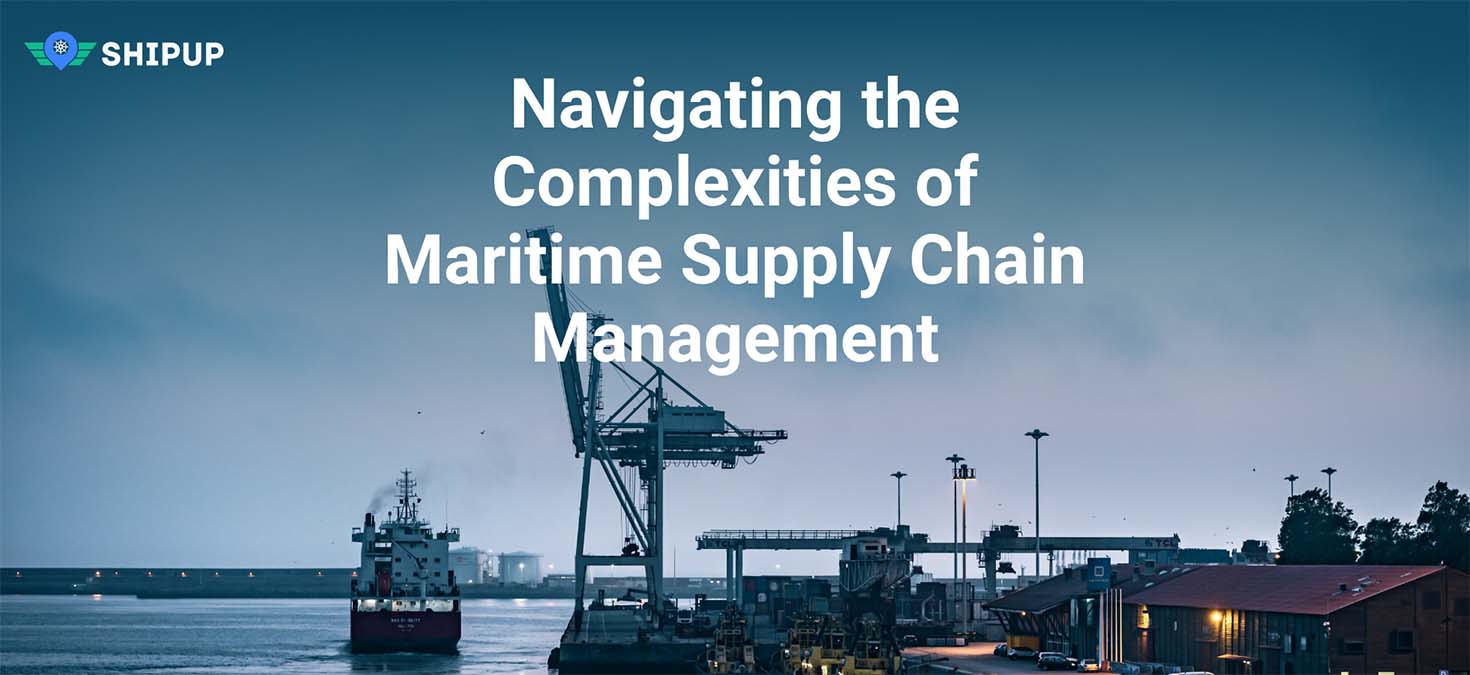Maritime supply chain management is the process of coordinating the movement of goods by sea from their point of origin to their final destination. It involves a complex network of shipping companies, ports, cargo handling facilities, and customs and regulatory agencies that work together to ensure the smooth flow of international trade.
With the vast majority of global trade being transported by sea, the efficiency and effectiveness of the maritime supply chain are crucial for businesses and economies around the world. In this blog post, we will delve into the components of the maritime supply chain, the challenges it faces, and strategies for improving efficiency. We will also touch on the role of shipment visibility platforms in modern supply chain management.
Components of the Maritime Supply Chain
Maritime supply chains play a crucial role in global trade, connecting producers, manufacturers, and consumers across the world through the transportation of goods by sea. However, these supply chains can also be vulnerable to disruptions that can have significant impacts on businesses and consumers. In this blog, we will explore some examples of supply chain disruptions in the maritime industry, the challenges that can arise in managing these supply chains, and strategies for improving efficiency and resilience.
Shipment Visibility Platforms
One of the most common examples of supply chain disruptions in the maritime industry is shipping disruptions, which can be caused by a variety of factors such as vessel breakdowns, port strikes, and unpredictable weather conditions. These disruptions can lead to delays in the delivery of goods and can result in higher costs for businesses and consumers.
One example of a shipment visibility platform is Visiwise.
Visiwise is a digital solution designed to help businesses improve the efficiency and transparency of their supply chain operations. With Visiwise, supply chain partners can track and monitor the movement of cargo in real time, allowing them to proactively address any delays or issues that may arise.
Visiwise also offers a range of features designed to enhance communication and collaboration among supply chain partners, including a customizable dashboard and alerts for key events, such as the estimated time of arrival or departure of cargo (ETA and ETD). By providing real-time visibility into the movement of cargo, Visiwise can help businesses reduce the risk of missing important updates and improve the overall efficiency of their supply chain management systems.
Challenges in Maritime Supply Chain Management
The shipping supply crisis that occurred in 2020 is another example of a significant disruption in the maritime supply chain. The COVID-19 pandemic led to a decrease in global trade and a significant drop in demand for shipping services, leading to a surplus of vessels and a shortage of cargo. This crisis had a ripple effect on the entire supply chain, leading to delays and disruptions in the transportation of goods and raw materials.
There are several challenges that can arise in the management of maritime supply chains, including limited capacity at ports and shipping lines, congestion at ports, complex customs regulations, and unpredictable weather conditions. These challenges can lead to delays and increased costs for businesses and can also have a negative impact on the environment.
Strategies for Improving Maritime Supply Chain efficiency
To address these challenges and improve the efficiency of maritime supply chains, there are several strategies that can be implemented. One strategy is the use of technology, such as cargo tracking systems and automated cargo handling equipment, which can help to improve visibility and coordination within the supply chain. Collaboration and communication among supply chain partners are also essential for improving efficiency and reducing the risk of disruptions.
Forming supply chain alliances and partnerships can also be an effective strategy for improving the efficiency and resilience of maritime supply chains. These partnerships can help to share resources and expertise and can also provide a platform for sharing information and coordinating responses to disruptions.
Finally, the adoption of sustainable practices, such as reducing carbon emissions from shipping, can help to improve the efficiency and resilience of maritime supply chains. By implementing strategies such as these, businesses can improve the efficiency and resilience of their maritime supply chains and better navigate the challenges that can arise in this industry.



